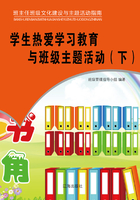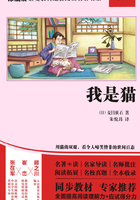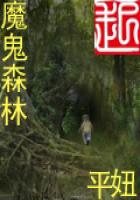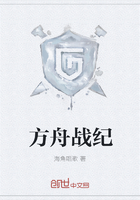Osteoarthritis① normally results from a deterioration② of the cartilage pads at the end of the bones. Spurs may develop, and a joint begins to grate like a rusty gate instead of operating like a well-oiled machine. This type most often affects knees, hips and spine—usually beginning in the 50s or later—with bony growths in the outermost finger joints sometimes appearing earlier. Pain and stiffness are the most common symptoms.
Rheumatoid③ arthritis is a more severe, whole body disease. Patients experience—in addition to stiff, inflamed joints—overwhelming fatigue, muscular stiffness and loss of appetite and weight. Joint damage results from prolonged inflammation④ of the synovium, a thin membrane that produces lubricating fluid. This destroys cartilage and weakens ligaments and tendons. Attached muscles may develop painful spasms. Most commonly affected are the joints of the fingers, toes, wrists and knees. Shoulders, hips, elbows and ankles may also be involved. In advanced cases, joints become grotesquely twisted and useless. Damage may also occur to connective tissues and organs, including the heart, lungs, nerves and eyes.
While drugs play an important role in managing arthritis, it has become apparent that weight control and regular exercise are also important. Surplus pounds put excessive stress on weight bearing joints and interfere with the smooth functioning of tendons, ligaments⑤ and muscles.
Regular exercise—both the regulated active type, in which you work your muscles to operate the joint, and the passive type, in which the joint is moved by some other force than your muscle action—can prevent deterioration from osteoarthritis and help alleviate the effects of rheumatoid arthritis.
Dr. James F. Fries, director of the Stanford University Arthritis Clinic, explains: “For arthritis prevention, you need strong bones and supporting ligaments as well as healthy cartilage. Exercise is the way to get these.” For active exercise, he recommends walking, hiking, swimming and bicycling—or, if you’re in shape, jogging and tennis. He advises against weight lifting, deep knee bends, and hard contact sports such as football.
Passive exercise is a way of “cheating” the muscle’s agonistantagonist system to keep the joint working despite painful arthritis. For example, you can passively work a shoulder that has been stiffened by bursitis (a form of arthritis) by bending at the waist and swinging your arm like a pendulum.
Strive for 15 minutes of appropriate exercise at least 5 days a week. This will help restore freedom of movement by improving circulation of blood and lymph to the affected joints, and by lessening contraction of joints, shortening of muscles and frequency of muscle spasms; it will also increase mobility and range of motion.
Isometric⑥ exercise—such as tensing and relaxing the buttocks muscles or repeatedly pressing the hands together—is of particular interest to arthritis sufferers, providing a way to contract and relax the muscles without requiring any real movement of inflamed joints. And exercise in water (hydrotherapy) is also favored because the water supports 90 percent of the body weight, allowing greater freedom of movement and reducing the risk, allowing greater freedom of movement and reducing the risk of injury.
Scientists offers these further tips:
1. Exercise each affected joint at least once a day for a few minutes.
2. Be sure that all your movements are slow and gentle; never exercise beyond the point of pain.
3. Don’t abuse your joints. Use the largest joint to accomplish the task—carry a shoulder bag instead of a handled purse, slide rather than lift heavy objects.
4. Balance your daily exercise with rest in order to reduce inflammation.
① osteoarthritisn. 骨关节炎
② deteriorationn. 恶化,变坏;退化;堕落
③ rheumatoidadj. 类风湿病的;风湿病的
④ inflammationn. 炎症;发炎;点火,燃烧;激动;狂怒
⑤ ligamentn. 【解】韧带;系带,纽带
⑥ isometricn. (复数)静力锻炼法 adj. 【生理】肌肉等长收缩的
关节炎
骨关节炎一般因骨端的软骨垫恶化而引起,可能长出骨刺,于是关节开始摩擦像一扇生了锈的大门似的,而不像一部充分润滑的机器那样运转。这类关节炎极其常见的是影响膝盖,髋关节和脊柱(通常开始于五十多岁或稍晚),有时手指末端关节处先出现骨瘤。疼痛和僵硬是最常见的症状。
风湿性关节炎更为严重,属全身性疾患。患者除僵硬、关节发炎外,感到极度疲乏,肌肉僵直,食欲不振,体重减轻等症状。关节损伤由滑膜的长期发炎引起,滑膜是一种产生润滑液的薄膜,它的长期发炎破坏了软骨,使韧带和肌腱变弱。附着于其上的肌肉就会发生疼痛性痉挛。风湿性关节炎最常见的感染部位是手指、足趾、腕部和膝盖,肩、髋、肘、踝等关节也常被累及。在晚期病例,关节出现畸形扭曲而失去作用。损害也会发生在结缔组织和器官,包括心脏、肺、神经和眼。
虽然药物在治疗关节炎时起重要作用,而控制体重和进行经常性锻炼的重要性,也已变得非常明显了。多余的体重给承受重量的关节加上过多的压力,同时也有害于肌腱,韧带和肌肉发挥正常功能。
经常性锻炼包括可控制的主动锻炼(它使肌肉运转关节)和被动锻炼(在这种锻炼中,是由其他力量而不是由肌肉的动作来牵动关节),都能防止骨关节炎恶化,有助于减轻风湿性关节炎的不利影响。














